 Occasionally something happens in the art world that is so truly fresh and ground breaking that it creates something of a revolution. When “girl photographer” Hiromix burst onto the scene in the 90s, her unpretentious, natural documentary-style snap shots had a charm and simplicity that immediately mesmerized Japan. Her fans ranged from young Japanese girls attempting to emulate her, to the typically jaded mainstream media showing its fawning side, to the usually rigid fashion industry which was suddenly forced to sit up and take notice of this teenage prodigy.
Occasionally something happens in the art world that is so truly fresh and ground breaking that it creates something of a revolution. When “girl photographer” Hiromix burst onto the scene in the 90s, her unpretentious, natural documentary-style snap shots had a charm and simplicity that immediately mesmerized Japan. Her fans ranged from young Japanese girls attempting to emulate her, to the typically jaded mainstream media showing its fawning side, to the usually rigid fashion industry which was suddenly forced to sit up and take notice of this teenage prodigy.
Mostly known for legitimizing the snapshot photography genre, with her diary style photos that basically record the everyday “ordinariness” of life, there is seemingly little that Hiromix, now age 32, hasn’t been able to accomplish. Her photography can be seen in eight highly acclaimed books, and dozens of the world’s most lauded magazines, including i-D, Numero, Purple, Visionaire, Dazed and Confused, and The Face, with Esquire naming her as one of the “50 Best People in the World.”
Having also written song lyrics, been in bands, directed music videos and commercials, appeared in a cameo in the film “Lost in Translation” and modeled for top fashion house Yves St Laurent, her talent is boundless, as is Japan’s obsession with this creative powerhouse.
Japanese girls truly admired her rise to fame, spawning a flurry of copycat diary style books shot with Instamatic cameras. Spurred by the notion that “perhaps I can do this too” her accessible style is ever inspiring, but also inclusive, and strangely comforting in its honesty.
Her informal, yet intimate photographs offered an untampered realism. Referring to her own work, the notoriously media shy Hiromix says, “Of course, I try and keep a certain truth and honesty to my photographs. It comes so naturally that I really don’t know what to say about it. But I’m not really thinking about it. Recently I’ve learned that people are not always honest, and that they are living life acting as someone else. One of my wishes is that all people live honestly.
“Basically self portraits are the act of ‘looking inside of oneself,’ as well as observing the beauty of this world. In the beginning I was kind of shooting for fun and expressing teenage blues, but after I started using a medium format camera, at that point it became more quiet, and something melancholy.”
Hiromix had an almost unprecedented wave of success as a photographer in Japan right from the start. Her well documented beginnings as the school girl snapper that caught the eye of Japan’s biggest photography icon Nobuyoshi Araki saw her winning the 11th New Cosmos of Photography photo contest at the age of 18. Her entry into the Canon sponsored event was a homemade 36-page photo album titled “Seventeen Girl Days” that offered tidbits of her rather normal life, shot in a fairly haphazard way with an instant camera.
By the time Hiromix graduated high school, she already had an enviable career as a pro shooter, with numerous editorial clients, in particular Rockin’ On which had her snapping the likes of The Beastie Boys, Sean Lennon and Marilyn Manson.
“I loved to draw when I was child,” Hiromix says of her childhood. “Around the time I was 10 years-old, I started to try many kind of methods to express my interior self using oil painting and animations. I tried to take photographs with a compact camera that I found in the house. But it only had two or three rolls of film.
“After that, in Junior high school, and senior high school I joined the school’s photography club. The photos were in black and white, and I printed them myself. But this experience never made me think: ‘I want be a photographer.’ Maybe I didn’t know this photography world existed at the age of 14. So I was really surprised to get the prize when I was 18.”
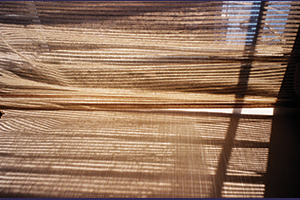 She followed her debut with her 1996 book “Girls Blue” under the watchful eye of photographer Takashi Honma who is similarly known for his natural style.
She followed her debut with her 1996 book “Girls Blue” under the watchful eye of photographer Takashi Honma who is similarly known for his natural style.
Her enigmatic face graced the cover, and a self portrait of her topless was on the back side, suggesting the theme of a girl exploring her identity in front of, and through the lens. Her coquettish and sexy looks coupled with her spontaneous eye created a media frenzy, with magazines such as Studio Voice devoting thirty pages devoted to her–the book went on to sell a record number of copies.
Hiromix is still surprised by her own success. “When I started working I was too busy and everything was so sudden, so for a long time I couldn’t accept the circumstances. I couldn’t understand what had happened. Even though I’ve always tried to do my best at work, I was always thinking something like, ‘I want to run away somewhere!’ Recently, I came to understand my situation, and accept that it seems like it will continue forever.”
And continue it did. By the time Hiromix released her five-year anthology book in 2000, consisting mostly of music portraiture and published by Rockin On, it was evident that she had carved out a formidable career for herself since her school days. Her use of an inexpensive Kodak Big Mini camera, which she used to shoot her first book with, is a fact that has stirred a lot of conversation in artistic circles. She says it was simply, “Cheaper and easier to buy than other cameras because I was only 17 years-old. However, using it I began to realize that the quality of the photos were excellent. In retrospect I realized it was destiny. Afterwards I also realized that my mentor Araki used the same tools, too.”
However, the Hiromix approach is hardly a new phenomena. The initial point-and-shoot revolution of the 1800s, that required no sophisticated knowledge of esoteric, and expensive equipment, was aimed at, and utilized by a demographic that included housewives shooting domestic scenes that were similarly inclusive.
Even the Kodak Instamatic was initially aimed at women in the 60s. Nevertheless, her diary snapshot style was seen as almost a new movement. Adding to the apparent innovation was the fact that she was a female photographer in Japan working in an industry that has typically been dominated by men. This was no small feat, and helped open doors for other photographers such as Yurie Nagashima, and Mika Ninagawa.
When asked about how she feels about spawning a genre of photography she says, “I wasn’t thinking about it really, so I never thought it would turn out this way. I was just going along with the flow, but it’s nice. New things always create a sense of confusion in the world. The world still sticks to old styles and old thoughts. But there are also many people who really understand me, which makes me so happy.
 “Objectively, I think it’s rare that people discover artists that are female and a teenager in the media world. Before, artists were predominantly male and middle-aged. If people want to know ‘what are young girls thinking?’ they haven’t had the opportunity to find out. But now we are in a new era and these people have the opportunity to find out.
“Objectively, I think it’s rare that people discover artists that are female and a teenager in the media world. Before, artists were predominantly male and middle-aged. If people want to know ‘what are young girls thinking?’ they haven’t had the opportunity to find out. But now we are in a new era and these people have the opportunity to find out.
“I think it’s very important to communicate across several generations. Now this notion has diminished compared to 30 years ago. People always say ‘I can’t understand what teens are thinking.’ But looking at photographs, they can reminisce on their feelings as a teen, and get that feeling back. I hope people can achieve communication across generations through the medium of photography.”
“Japanese Beauty,” her book of fashion shots, is a great example of her point-and-shoot aesthetic in a genre that is notoriously fraught with artifice. Hiromix took the notion of fashion photography, normally seen as exotic and glamorous with highly stylized set ups, and gave it a kind of democracy. This look was embraced by magazines such as Purple, Vice and Nylon, and has now become a widely used aesthetic for commercials and advertising.
She says of her influences, “Araki, and Takashi Homma are really influential for me. Also the music and fashion of the 1960s. It’s so powerful, energetic. I love to collect records, CD and photo books, and vintage clothes. I also received a lot of influence from the photos of record covers, and magazines of that time. That era had so many great photos.
“I love to see photos similar to mine… like with natural sunlight. The reason is, I love to see people living their everyday lives. I think it’s the primitive root or basis of photography. However, I’ve now begun to enjoy the opposite style, such as retouching, or structural stuff… but it’s far from photography, and closer to a new style of digital painting”
Aside from shooting snaps, Hiromix ever paints herself as the simple girl next door,
saying her interests are, “Knitting wool, cooking, drawing, writing poetry, watching and analyzing human society, thinking about the universe, admiring ancient lifestyles, thinking about where humans are going, thinking about the progress of human personality.
“I really love several kinds of music,” she continues. “Basically 1960’s R&B and Doo-wop. I love hip-hop, jazz, and bossa nova and I’m also interested in folk music from different countries. I listened to a lot of new rave before. I made a CD before, but it’s not that good and I’m not satisfied. Sometimes, I also DJ, but now my mood has changed and I want to listen to quiet kinds of songs. Of course I love the American hit chart!”
While fame has certainly catapulted Hiromix into the limelight, the challenge is to try to simply document the things that surround her, although this desire to be natural is now fraught with a necessity for an expected professionalism and quality. Although, it seems that very little has changed in terms of her artistic vision and method, shunning digital, and keeping it as real as possible.
“I’m still taking landscapes of my life. I try to take photos that I want to leave behind, and things my fans want to see. With fame my situation has changed, and my mood changes everyday. Compared to when I was 17, almost everyone around me are celebrities, but I still try and find photogenic and fun people to shoot. More than before, I am also taking photos of people of different nationalities. Recently, even if I am in Tokyo, there are many interesting people coming here from varying countries, so we hang out, and take photos, and that’s nice. But I think I should try to move to another country, but I don’t know where, I haven’t decided yet.
“I love to photograph real people. It’s said that even if we find nice Japanese people, they are almost always in a contract with a big management agent. I tried to hang out and photograph show business people before, but I didn’t fit in. They’re so nice, but I recognized that street style is my favorite method of shooting.”
Admitting she feels a typical artist’s dissatisfaction, it seems that she is constantly creating. Of her current activities she says vaguely, “I have some projects…” We can only wait with anticipation at this ever influential artist’s next move as she continues her formidable career fifteen years down the line from when she shook the Japanese art world’s foundations with her beautifully simplistic vision.
Story by Manami Okazaki
From J SELECT Magazine, October 2008

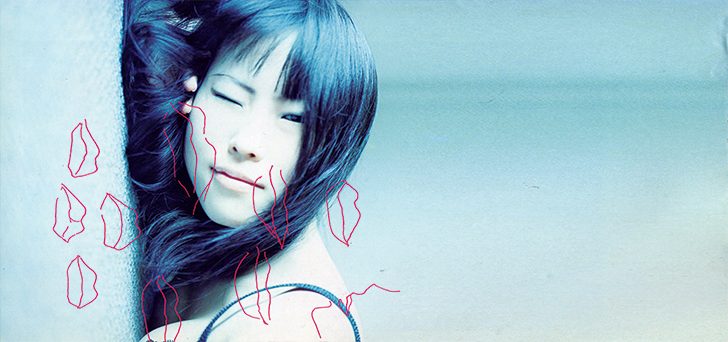


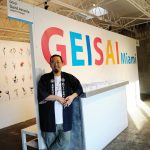
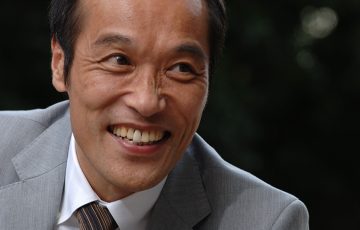
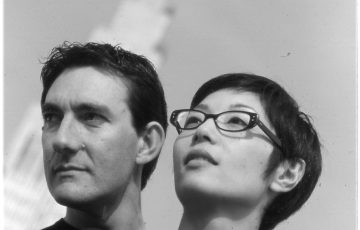
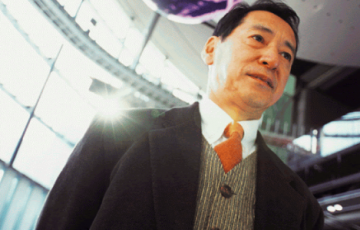

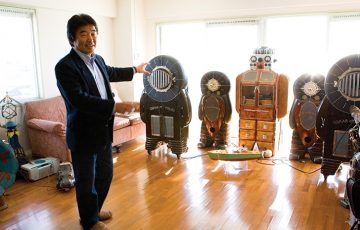





Recent Comments